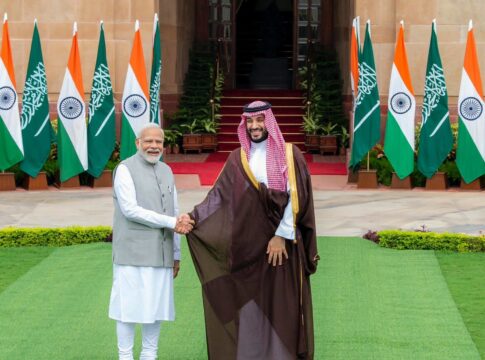In a significant move to bolster its global logistics capabilities and diversify its economy, Saudi Arabia has inaugurated a new shipping route between Jeddah Islamic Port and two of India’s largest ports, Mundra and Nhava Sheva. Operated by Folk Maritime Services, a subsidiary of the Public Investment Fund, this new 10-day service aims to facilitate the increased movement of goods such as petrochemicals. This initiative is closely aligned with Saudi Arabia’s Vision 2030, which seeks to position the kingdom as a central logistics hub on the global stage.
The establishment of this route comes at a crucial time for India-Saudi trade relations. India, which stands as Saudi Arabia’s fourth-largest trading partner, experienced a notable 12% decline in trade with Gulf Cooperation Council (GCC) countries in the 2023-24 period, recording a total trade value of $162 billion. This downturn is largely attributed to India’s pivot towards discounted Russian crude. Nonetheless, Saudi Arabia continues to play a vital role in India’s energy sector, supplying 16.7% of its oil imports in 2023, making it the third-largest crude exporter to India.
In 2023, Saudi exports to India amounted to $30 billion, while imports from India were valued at $11.6 billion, according to the General Authority for Statistics. Despite the challenges facing non-oil trade between the two nations, initiatives like Folk Maritime’s new shipping route underscore ongoing efforts to diversify and fortify bilateral ties.
The new shipping route is anticipated to offer significant advantages in terms of cost and time savings. Logistics experts suggest that the direct maritime link will reduce shipping times for certain goods by several days compared to traditional routes that may involve transshipment at intermediate ports. This reduction in transit time is particularly beneficial for time-sensitive goods, ensuring faster delivery and reduced inventory costs for businesses on both sides.
Moreover, the streamlined route is expected to lower transportation costs, benefiting industries that rely heavily on petrochemical imports and exports. The operational efficiencies gained through this direct service can translate to more competitive pricing for end consumers, thereby enhancing trade volumes and economic cooperation between Saudi Arabia and India.
The launch of this shipping route was marked by a visit from India’s external affairs minister, Dr. S. Jaishankar, to Riyadh for the inaugural India-GCC joint ministerial meeting for strategic dialogue. During this high-profile meeting, officials from both countries discussed ways to boost cooperation across various sectors, including trade, investment, and infrastructure.
Saudi Arabia is not limiting its ambitions to the maritime domain alone. The kingdom is expanding its non-oil trade efforts by enhancing credit facilities to exporters. The Saudi Export-Import Bank reported providing $4.3 billion in financing and insurance in the first half of 2024, marking a 128% increase from the previous year. These financial incentives are aimed at encouraging Saudi exporters and making their products more competitive in the global marketplace.
Additionally, Saudi Arabia is leveraging its strategic geographical location and investing in infrastructure to strengthen its position in global trade. The recent acquisition of the container ship M/V Folk Jeddah and a vessel exchange agreement with Oman’s Asyad Line are parts of this broader strategy to enhance global supply chain resilience, expand maritime services, and reduce its non-oil trade deficit.
The new Jeddah-India shipping route is a testament to Saudi Arabia’s commitment to enhancing its logistics infrastructure and diversifying its economy in line with Vision 2030. By improving connectivity and reducing transportation costs, this route offers substantial benefits not only to Saudi Arabia and India but also to the broader Gulf region. As these nations continue to explore new avenues of cooperation, the economic landscapes of both regions stand to gain significantly from these strategic initiatives.



